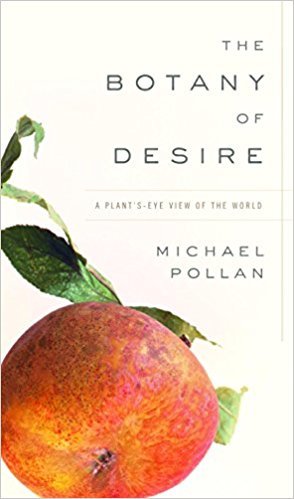- The Good: A survey of four plants and our human tendency for selective breeding
- The Bad: Note Pollan’s personal and anecdotal style; unifying thesis is a little weak
- The Literary: Great reference section
Humans domesticate and breed lots of plants for our own benefit, but Michael Pollan asserts that the relationship is more reciprocal than we think. Plants use humans to travel and multiply, just as they use bees to collect nectar and pollinate their mates. Pollan explores the human histories of four plants—the apple, the tulip, marijuana, and the potato—and how those plants have changed and dominated others in their species thanks to our preferences.
Although it sounds like there is a grand thesis about plant evolution masterfully outsmarting humans to their own benefit, Pollan freely admits that it’s about random natural selection. You’ll enjoy this book better if you’re ready for the journalistic storytelling of each chapter, instead of expecting some unifying scientific theory.
The story of the apple in America centers around the legend of Johnny Appleseed. Apples are incredibly diverse, with every seed containing an entirely new set of genetic code, but people selected and bred (or grafted) the best of them for their sweetness, so that now we only have regular access to a handful. Johnny Appleseed, aka John Chapman, took advantage of the westward expansion of the American frontier, growing apple trees he could sell to new landowners. I love the investigation into the real John Chapman as opposed to his Protestant public image.
Although tulips no longer hold so much of our human attention, for a short period in the 1630s the price of tulips skyrocketed around Europe, especially in Holland. Now known to be caused by a virus, the tulip could display multiple colors in a single petal, which hastened the fashion for unique patterns and colors. The tulips only bloomed for about a week in the spring, so the rest of the year consisted of digging up the bulbs for sale and trade, before settling on future trade deals for the next year. Tulip mania is considered to be one of the first recorded speculative bubbles, all based on our own human desire for a certain standard of beauty.
Cannabis, Pollan’s plant representative for intoxication, once again stands as a product for selective breeding by human hands. More interesting though is the look at why humans throughout history and all over the world get high. And what are the chances that any chemical produced by a plant would affect our brains in such a specific way? Marijuana in America has had wide swings in public acceptability, so it’s interesting to note the changes in the twenty years since this book was published.
The last plant and chapter focus on the everyday and often nondescript potato. Like the previous plants, humans have either bred huge variety (the Incas) or selected for a single strain (the Irish), often at the same time (both in the 1500s). The disastrous results of the Irish potato famine illustrate how monocultures can end in tragedy, but we humans are at it again. Pollan explores our new technologies in selective breeding, whereby Monsanto and other corporations splice genes into food that would otherwise never have occurred in nature. We are not sure of the consequences, but Pollan does a fantastic job of approaching the situation with nuance and consideration.
I’ve now read several books over Pollan’s career as an author, including How to Change Your Mind: The New Science of Psychedelics, This Is Your Mind on Plants, and Caffeine: How Caffeine Created the Modern World. I’m happy to say that Pollan’s voice is consistently considered and easy-to-read, if a bit rambly. He is a natural experimentalist, ready to grow or eat whatever he’s researching, so you get the personal touch alongside fun character studies and light science.
Highly recommended as an introduction to Michael Pollan and his journalistic approach to things we grow!
